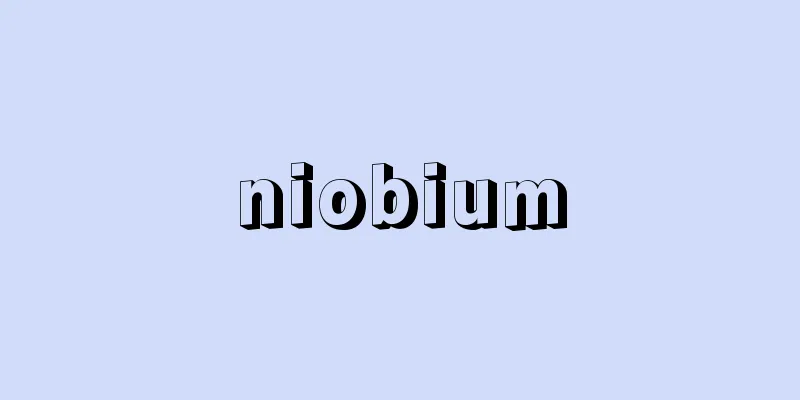niobium

|
Nb. Atomic number 41. Electron configuration [Kr] 4d45s1 . Atomic weight 92.90638(2). A mononuclear element with only one isotope of mass number 93 in nature. Radioactive isotopes with mass numbers 81 to 113 are known. In 1801, British C. Hatchett discovered a new metallic element in a mineral called columbite from North America housed in the British Museum and named it columbium, but this was mistaken for tantalum, which occurs together with it. In 1844, German H. Rose revealed that Hatchett's new element was different from tantalum, and named it niobium after Niobe, the daughter of Tantalus in Greek mythology, because the new element occurs together with tantalum. In 1949, niobium was adopted by IUPAC, but the name columbium is still used in the American metal mining industry. The Japanese names for elements are derived from the German names. In his book "Semitsu Kaisyo" published in 1837, Udagawa Yoan called it "Columbium." Source: Morikita Publishing "Chemical Dictionary (2nd Edition)" Information about the Chemical Dictionary 2nd Edition |
|
Nb.原子番号41の元素.電子配置[Kr]4d45s1の周期表5族遷移金属元素.原子量92.90638(2).天然には,質量数93の同位体のみが存在する単核種元素.81~113の放射性核種が知られている.1801年,イギリスのC. Hatchettが大英博物館所在の北米産のコルンブ石(columbite)と名づけられた鉱物中から新金属元素を発見し,コロンビウムと命名したが,ともに産出するタンタルの間違いであるとされた.1844年,ドイツのH. RoseはHatchettの新元素がタンタルとは別物であることを明らかにし,新元素をタンタルとともに産出することから,ギリシア神話のタンタルスの娘ニオベにちなんでニオブと命名した.1949年,niobiumがIUPACにより採用されたが,最近でもアメリカの金属鉱業界などではコロンビウムという名称も用いられている.日本語の元素名はドイツ語の元素名を採用した.宇田川榕菴は天保8年(1837年)に出版した「舎密開宗」で,格綸彪母(コリュムビウム)としている. 出典 森北出版「化学辞典(第2版)」化学辞典 第2版について 情報 |
<<: Niobium and tantalum mineral
>>: Piddock (piddock shell) - Piddock (English spelling)
Recommend
Ho (language) (English spelling) Ho
... It is divided into three groups, North, South...
Guarini, GB - Guarini
...Typical poets include Tasso in Italy, Ronsard ...
Gonzaga, TA (English spelling) GonzagaTA
… In the midst of the dominance of the neoclassic...
Oxadiazon - Oxadiazon
...Simazine and atrazine in particular are known ...
Chionanthus virginica (English spelling)
… [Toshio Hamatani]. … *Some of the terminology t...
Bisai Textiles - Bisai Textiles
The textile industry has been developed in the wes...
Worm gear
...There are various shapes of tooth traces (in t...
Ranzan Ono
Year of death: 27th January 1810 (2nd March 1810) ...
Image
...But trying to force his individual genius, whi...
Livonian War
1558-83: Russian war against the Livonian Order, L...
Urinimugina - Urinimugina
...The ruler of the Sumerian city-state of Lagash...
Patterson, John Henry
Born December 13, 1844, near Dayton, Ohio Died May...
Open ceiling - Open ceiling
A tall interior space that extends to the height ...
Rumor - Rumor
...Traditional music includes the dance cueca, wh...
Singora
…Population: 243,000 (1990). English name: Singor...


![Mikumo [town] - Mikumo](/upload/images/67ccefbd55a30.webp)





![Pope Innocent [III] - Innocent](/upload/images/67caf77e43805.webp)
